Pauillac and Saint Julien: Sweet Spots
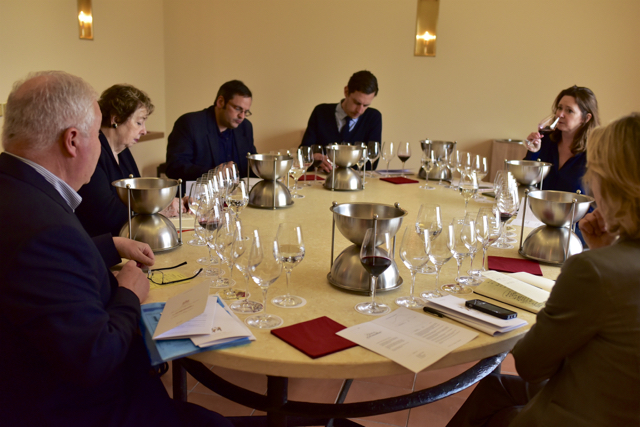
Bordeaux 2016 barrel tasting notes
New addition: Sensual and strong Saint Julien!
By Panos Kakaviatos for wine-chronicles.com
2 May 2017
When I was tasting barrel samples in Bordeaux with wine author Jane Anson, exclusive Bordeaux en primeur critic for Decanter, blogger and ace photographer Miguel Lecuona and Bloomberg writer and wine author Elin McCoy, we were marveling at how amazing Léoville Las Cases was.
We had similar reactions at Latour and at Lafite Rothschild.
When I tasted Grand Puy Lacoste with writer Adam Lechmere, and Léoville Poyferré and Ducru Beaucaillou on my own?
Once again: enthusiastic tasting reactions.
Yes folks, the northern Médoc did very well in 2016. As we have seen with the wines of Saint Estèphe, so we see with the wines of Pauillac, and – especially – Saint Julien (notes just added).
The small size of Saint Julien, with many a classified growth packed in, tends to accentuate a certain homogeneity year in, year out. But 2016 really shined bright. Saint Julien combines the elegance of Margaux with the concentration and grip of Pauillac. In 2016, that description was crystal clear.
Great wines in Pauillac, too, as they had been in 2015, but with a bit more power on a general level. A bit more grip. Of course winemaking styles need to be taken into account. Pichon Baron is not made the same way as Pichon Comtesse, for example. And bargain hunters can find many successful cru bourgeois in Pauillac (not so many in Saint Julien). The classified growths – from fifth growths to the trio of first growths – are all at least very good.
Without further ado, notes on the two appellations below, starting with Saint Julien.
As usual, wines in bold, I liked in particular. When red and bold, even more. And when underlined, too, a kind of barrel sample nirvana.
Sensual and strong Saint Julien
Biggest surprise: Beychevelle / Top of the pops: Léoville Las Cases / Best value: Branaire Ducru or Lagrange
Really, pretty much every single wine below is worth your while. It depends on your wallet size.
Château Beychevelle – Such a gorgeous nose of ripe fruit and flowers this year. Best Beychevelle I have ever had from barrel: could it be because it is the first vintage made from the estate’s mighty impressive new cellar and barrel installations? Very refined, spherical and smooth, with sap and grip. Clearly an illustration of the “sweet spot” of the vintage: Saint Julien. Polished tannins and ripe red and dark fruits. Long finish. If the price is right, do not hesitate. 93-95
Château Branaire Ducru – Lovely nuanced expressions of red and black fruit, the palate has a certain seriousness about it, not giving things all away just yet, with underlying power that hides perhaps just a bit the charm. A tonic, echoing finish that proves how nicely Saint Julien was as a commune. This is a wine that demands time in your cellar. 92-94

I was late for the tasting, but they let me in anyway. With Jane Anson, Bruno Borie of Château Ducru Beaucaillou and Elin McCoy
Château Ducru Beaucaillou: Floral aromatics beguile the taster, like a spring bouquet, mingling with notes of pencil lead and blackberry, no doubt coming from a “very high” percentage of Merlot (15%) for the first wine, according to the cellar master. The very juicy and sumptuous palate yields more dark fruit and brambly red berry, along with polished cedar notes. A very long finish, with much dill-like lift, entices you to drink more, due to the inherent freshness of the vintage. Clocks in at 13.63% alcohol with high tannin (although not as high as in 2010). 96-98
Château du Glana – A bit edgier in tannic expression than both of the above wines. Here we have a bit of stolidity to the wine. Somewhat rustic by comparison. But there is full body and it will be smoother after barrel aging. 89-91
Château Gloria – Robust Gloria, freshness sure, if not quite as refined and elegant as, say, Beychevelle. But there is ripe fruit and a suave delivery leading to a finish with lift. And the price should be more than right. 90-92
Château Gruaud Larose – Lovely, deep nose! Here we have something very special. On the palate, power and density, indeed (just as Rauzan Ségla had stepped ahead of the pack in a tasting of Margaux at the UGCB). Here we see Gruaud take a front seat with a somewhat brooding wine, tannins noticeable, but very well balanced by the alcohol and acidity. Loads of mid palate density. This is going to go far. 92-94+
Château Lagrange – Quite an impressive, corpulent Saint Julien, with nuance and flavors that sneak up on you, from spice to cassis. There is full body and tonic freshness, the tannins smooth and refined. If the price is right, this could be the best value of the Saint Julien classified growths. 92-94+
Château Langoa Barton – Lacks the sumptuous aspect of 2015, which I preferred en primeur. The tannins are more noticeable. Yet there is a fine precision overall, and length that is impressive. 90-93
Château Leoville Barton – A very fine expression of Cabernet. The purity of fruit – cassis and blackberry primarily – impresses. Quite pure and linear on the palate, the texture refined. A bit more cool and subtle in its overall delivery, but with undeniable underlying power. I like the juicy lift on the long finish. Time in barrel may well yield a theoretical profile that mixes 2010 with 2015. I need to taste it again – perhaps during Vinexpo in June. 93-95
Château Léoville Las Cases – Tasted after both Margaux and Palmer that morning, and it is probably my pick among the three, when you take into account price – especially for Château Margaux. What makes Las Cases so special in 2016? The anthocyanes and tannins are higher than in 2010 and yet a long harvest period, with cool nights, lends such freshness to this wine that the tannic power is in the proverbial velvet glove. Certainly not as “sumptuous” as 2009 or perhaps 2015, the 2016 includes some 2010 power, with 1996 purity and 2001 elegance, but more amplified. Over 10% Cabernet Franc, from 80-year-old vines, give freshness, while the nearly 15% old vine Merlot adds richness. The spinal column, as ever, is Cabernet Sauvignon. Its ripe aspect, its gorgeously suave (much juicy sap to the mid palate) yet imposing tannins integrate 90% new oak that the taster does not sense: so seamless, yet so very complex already. The balancing acidity brings freshness and lift to the long finish that goes on and on … and on. Saint Julien seduction + Pauillac poise = superb LLC! And a wine of the vintage candidate to be sure. 97-100
Château Léoville Poyferré –One of the best-ever barrel samples from this estate: so smooth and veritably juicy. When tasted in late March at the negociant Maison Joanne, I loved the blackberry and cassis “opulence” on the nose, with much substance on the mid palate. The sample at the château tasted two weeks later showed even better, with the 80% new oak well integrated, even if owner Didier Cuvelier does malolactic in barrel, which tends to “draw out” oak-derived vanilla flavors. None were sensed from the sample. The 13.6% alcohol was well balanced by bright acidity, and the tannins – quite high – were gorgeously ripe. A long finish, and bravo to owner Didier Cuvelier. 94-96+
Château Saint Pierre – This is lovely, in terms of body and freshness and ripeness. Iodine freshness on the finish; full bodied but never heavy or hard. Could be a superb value. 92-94
Château Talbot – Quite sumptuous on the attack, the tannins a bit marked by the oak. Not the finest among the Saint Juliens, but very pleasing overall. Higher score potential as there is much substance to the mid palate, with veritably juicy aspects. 90-92
Pauillac
Château Batailley – A fifth growth for (still) a decent price, for those of you who cannot afford loftier price tags of second and first growth Pauillacs. The 85% Cabernet Sauvignon brings imposing tannin, at this early stage, but full body and structure. Time in glass reveals blackberries, plum, cassis and red cherry, with balance between alcohol and acidity. A substantial wine that will all come together with 5 to 10 years in bottle. 91-93
Château Bellegrave – Along with a few other cru bourgeois I tried, a lovely Pauillac. The tannins need taming (again, the purpose of barrel aging). A slightly medicinal aspect, but then you get noble notes of cassis, red fruit and some black olive. Fine overall: freshness and full body and richness. And a smooth finish! 89-91+
Château d’Armailhac: Marked by light espresso and dark fruit notes on the nose. The palate is dense with rounded tannin, and driven by ripe fruit leading to a finish marked by the freshness of the vintage. Tasted twice: at the UGCB press tastings and at the château, confirming my feeling. 91-93
Château La Fleur Peyrabon – Yet more proof that you do not need to go to the classified growths to appreciate fine Pauillacs in 2016. Lovely expression! Full bodied, yet fresh and ripe. A very smooth palate, leading to a pleasing lifting finish marked by again ripe fruit. Bravo! 90-92
Château Fonbadet – Here we have another lovely cru bourgeois! Sap driven juicy and flavorful! Really fun to taste, juicy. What can you say? Buy this. A bit edgier than La Fleur Peyrabon, but still… 89-91+
Château Clerc Milon: Now for a pleasant surprise! For an article to appear in Decanter Magazine’s June Bordeaux issue, I wrote about Médoc’s Fifth Growths, many of which are in Pauillac. One estate that has been getting better includes Clerc Milon, and the 2016 barrel sample of which is the best I have ever had in the last 15 years of tasting Bordeaux from barrel. While tasting it at Mouton Rothschild, Decanter writer Jane Anson, fellow wine blogger and photographer Miguel Lecuona and I spent just as much time talking about this wine as we did about Mouton. What beautiful finesse, what gorgeous floral freshness, what juicy opulence! The palate has the polished density that one would expect from a fine Pauillac. The overall texture is like satin and the finish has cool fruit lift. Looking for a bargain price in this somewhat expensive category? Here you go! 94-96
Château Croizet Bages: The overall sense here is of tannin that is not … too finely grained. It dries a bit on the finish. The nose is fine, with plum and touches of spice. And sweet ripe fruit, so bravo on that front. But the finish is marked by somewhat rustic tannin. 88-90
Château Duhart Milon: A very clean and pure expression of red berry fruit, very polished in its fine grained tannin, that caresses the palate but displays impressive structure too. While I am impressed by this “soft expression”, I am more impressed by the Clerc Milon not too far away. 92-94+
Château Grand Puy Ducasse: Fine expression of graphite and ripe red and black fruit, with some toast from the oak. There is a bit of “modern sheen” to this wine, leaving me with a somewhat monochromatic image, but you have to admire the concentration and scale that continues an improvement over what this estate had produced in the past: rather average, boring wines. But it lacks the nuance and veritable depth of some of the other Pauillacs. It is a solid wine. 89-91
Château Grand Puy Lacoste: Gorgeous seashell freshness that gives off a feeling of power and yet dances on the palate. Juicy blackberry fruit, and cooler cassis notes, on the palate, combining some of the delectable ripeness of 2009 and some of the power of 2010. A special vintage for GPL and if the price is reasonable, buy it! 94-96
Château Haut Bages Liberal: A powerful Pauillac. Going back to it, after the Comtesse in a press tasting organized by the UGCB, it comes across more simple, but that really does not do it justice. It is exhibits ripe fruit and juiciness, too. There is much to like even if it lacks the tannic finesse of, say, GPL. 90-92+
Fellow taster Jane Anson dubbed Château Lafite Rothschild “elegant to a fault,” and I see what she means. Rarely too aromatically expressive from barrel, what distinguishes this wine is the palate’s pristine, laser-like focus and long length. Pure cassis and pencil lead drives the Cabernet Sauvignon attack, both subtle and misleadingly soft. Like Latour, the wine envelops the mid palate with layers but more silky smooth texture. The underlying structure reveals super fine tannic grain. The very long finish leaves one with the impression of sophistication and serenity. Barrel aging will amplify this into something very special, so score it likely on the higher end of the scale. 96-99
Château Latour may just be the first among the firsts from barrel in 2016. Fellow blogger and photographer Miguel Lecuona dubbed it “a sense of momentum taking you forward” and that sums up the wine’s suave and subtle power. Above all, you get a sense of finely grained tannin on the palate, which displayed distinct notes of crushed tobacco, graphite and a mix of cool blueberry and ripe blackberry fruit. Everything seems in place. You get sumptuousness, too, from the 7% ripe and fresh Merlot that was particularly successful, explained estate technical director Hélène Génin. I could not get enough of the urbane class of this wine, with layers of pleasing palate texture and a distinct cigar box finish, displaying superb raciness and a very long finish. Bravo! 98-100
Château Lynch Bages: What perfume! Here a stand out nose, clean expressions of juicy dark and red fruit, with pencil lead, assessed alongside other wines at the UGCB press tasting. A full bodied haut couture wine, with a super high IPT index of 95! But the freshness of the vintage (and ripeness of the tannin) does not bring out hard edges. There is much juicy fruit, dark fruit, coupled with graphite and a cooler mint aspect. OK, the tannin does feel a bit austere on the finish, but it is of a fine grain and the type of tannin that will soften with barrel (and bottle) aging. Bravo! 94-96+
Château Lynch Moussas: Rather delicate in its expression of red and dark fruit, as compared with Batailley (of the same owners). I like the elegance, combined with toasty oak notes at this early stage. 90-92
Château Mouton Rothschild is close behind the other two Pauillac first growths, and I could be underestimating it. One gets more expressive aromatics by comparison, an opulent expression of musky spice, violets, blackcurrant, blackberry and blueberry. Sexy stuff. What pleased me even more than last year is a superior sense of lift and freshness that complements the deep, silky tannic texture, albeit with hints of ripe sweetness on the attack. The graphite and white tobacco reflect Cabernet Sauvignon, which makes up over 80% of the blend. But there is black fruit and cocoa flavor coming from ripe and delicious Merlot, at 15% of the blend. The fresh finish is marked by rather strong tannic edginess, even a certain rawness that barrel aging should assuage. 96-98
Château Pedesclaux – Ripe blackberry, some roasted fruit. There is richness to this. Does not have the breed of the upper echelons, but there is succulent and compellingly clean fruit. The tannins are marking the finish but they are not drying or hard. Just needs … barrel aging. The blend is 48% Cabernet Sauvignon, 45% Merlot, 4% Petit Verdot and 3% Cabernet France. Yet more proof that this estate is getting better and better. 90-92+
Château Pichon Baron: This wine shows superb depth and power, exhibiting classic Pauillac notes of lead pencil, licorice, dark fruit, cassis and some creosote and smoke. The palate is enveloping and the tannin very present. Here we have a somewhat imposing child that really needs quite a bit of time in bottle to settle, but that will reward your patience! A full-on Pauillac powerhouse that will need much time to enter a proper drinking window. 94-97
Château Pichon Longueville Comtesse de Lalande: A special wine surpassing both the excellent 2014 and 2015 vintages. The 75% Cabernet Sauvignon was picked comfortably late, remarked director Nicolas Glumineau, because it ripened slowly and surely over the long Indian Summer, recalling certainly the superb 1996 vintage. But 2016, 20 years later, has greater density and evident juiciness, as the 21% Merlot was very successful, he added. It felt so fresh and powerful at the same time, so wonderfully juicy and substantial on the layered palate, leading to a finish marked by stunning floral elegance. A full-bodied wine yet with such feminine charm. I did not want to spit. There is a real character-driven tannin, with a glorious full bodied aspect, along with long length. The 13.3% alcohol is balanced by excellent, bright acidity. The substantial tannin – more than in 2010 – was ripe and smooth. Verily a “super second”. 96-98+

With Justine Tesseron of Château Pontet Cannot (Jane Anson, Elin McCoy and Miguel Lecuona in the background)
Château Pontet Canet: Racy elegance exudes gorgeous floral and spice aromas, along with juicy, yet bright and fresh fruit that seems to cloak the wine’s impressive tannic structure and power. Juicy ripe black and red fruit flavors combine with both floral and spicy notes of violet, licorice and white pepper on the palate, which leads to a long finish with fresh, dill-like lift. Perhaps the purity of fruit is coming from 35% of the wine aging in amphorae, along with 55% new oak and 10% in one-year old casks. This is, in short, a gorgeous blend of 60% Cabernet Sauvignon, 35% Merlot, 4% Cabernet Franc and 1% Petit Verdot that rivals the first growths. Aging will fill it out even more to yield top-notch wine made at this most impressive Pauillac estate. 95-98
Category: Blog Tagged: Ducru Beaucaillou, Grand Puy Lacoste, Lafite Rothschild, Latour, Léoville Barton, Léoville Las Cases, Léoville Poyferré, Lynch Bages, Mouton Rothschild, Pichon Comtesse, Pontet Canet, Saint Julien
 Wine Chronicles
Wine Chronicles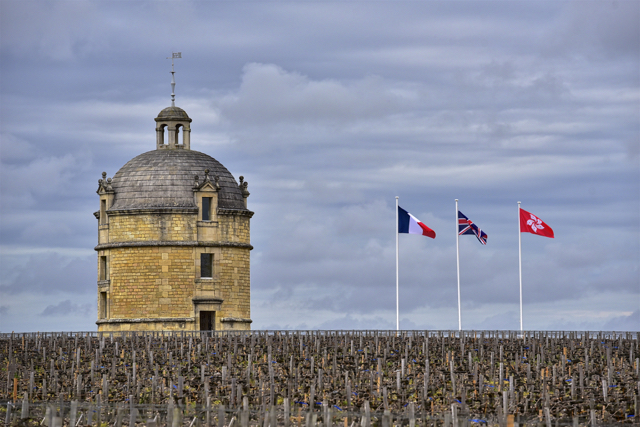


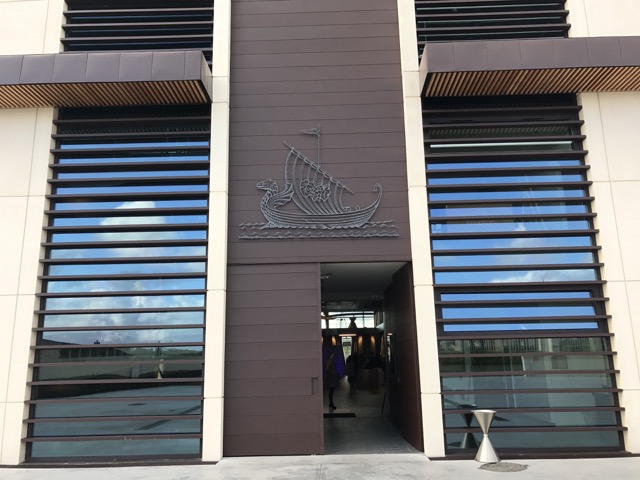


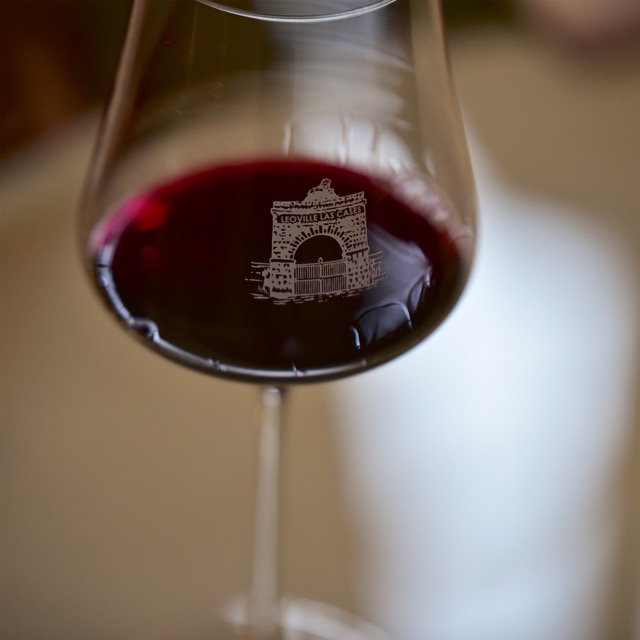





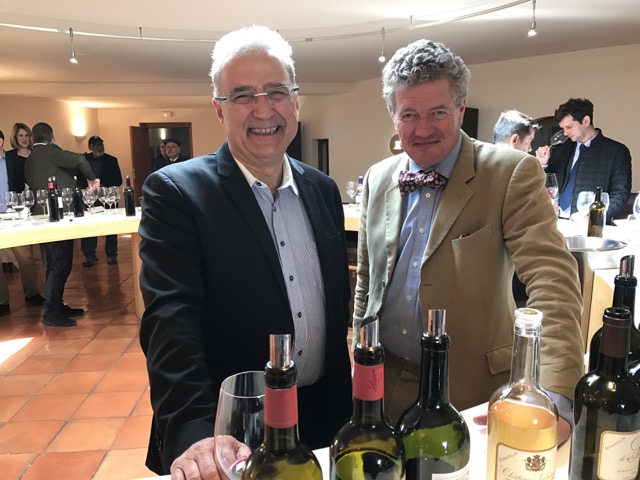
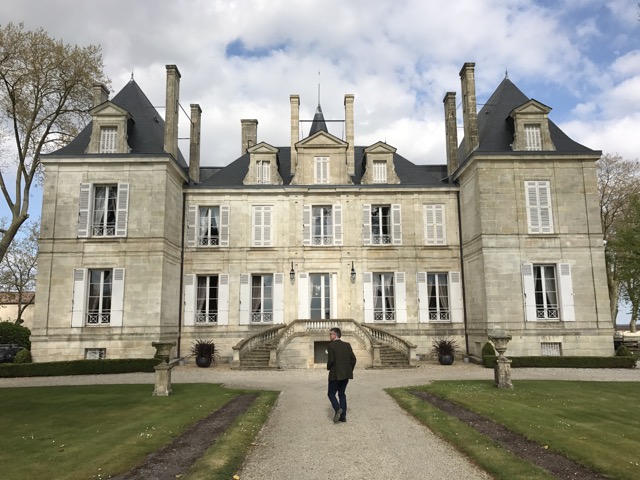
Share This